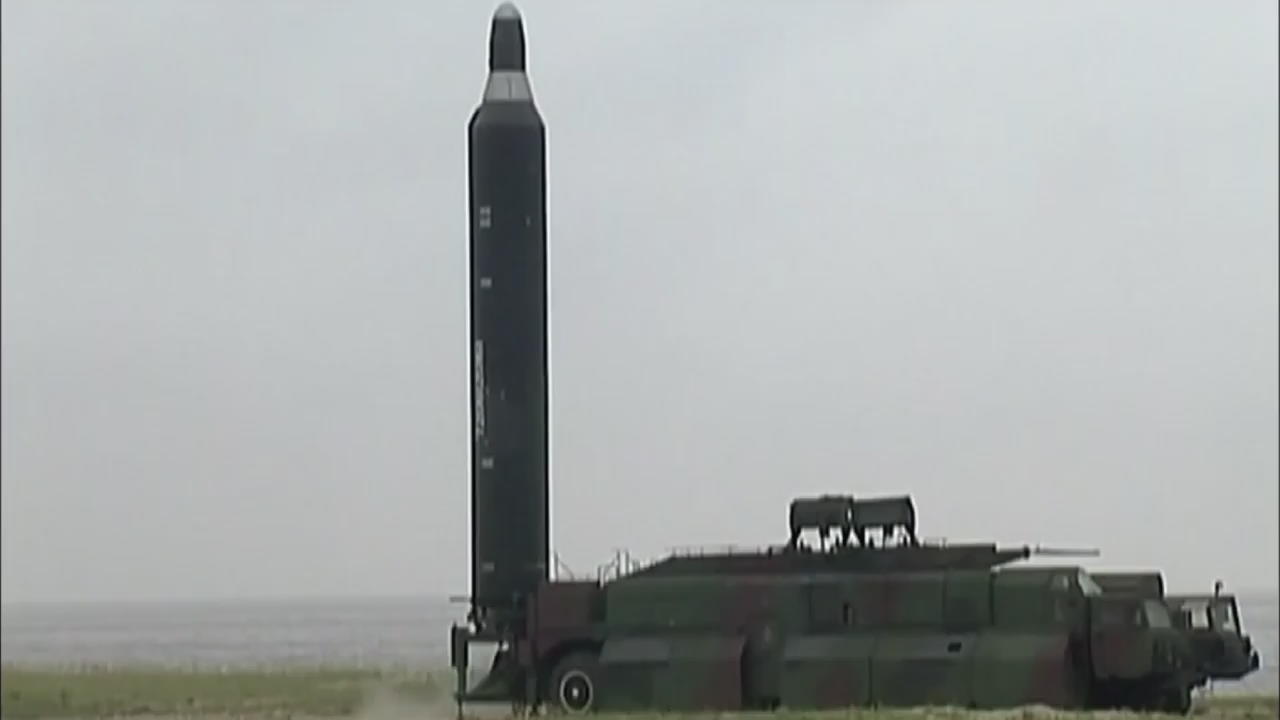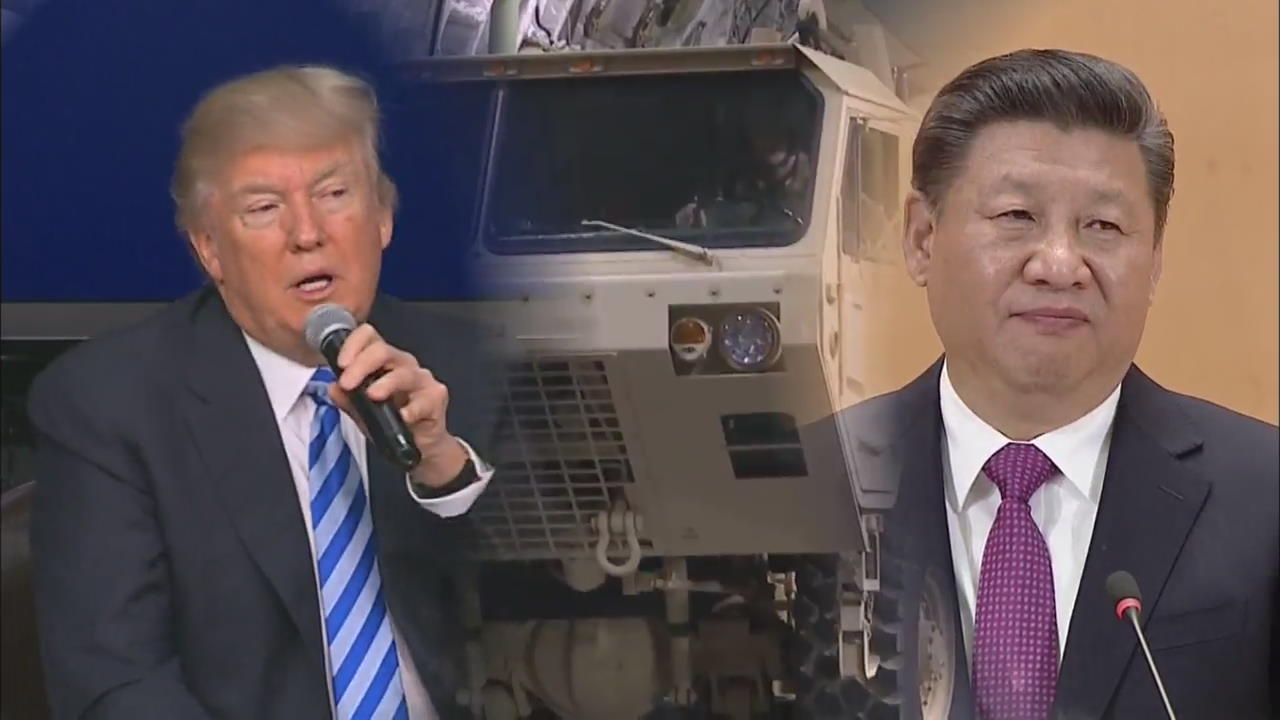NK Missile Launch
입력 2017.04.05 (14:09)
수정 2017.04.05 (14:33)
읽어주기 기능은 크롬기반의
브라우저에서만 사용하실 수 있습니다.
[Anchor Lead]
We begin today’s show with another provocation from North Korea. The South Korean Joint Chiefs of Staff say that North Korea fired a ballistic missile Wednesday morning. Here’s more.
[Pkg]
The Joint Chiefs of Staff announced that Pyongyang fired a ballistic missile into the East Sea at around 6:42 a.m. Wednesday from Sinpo, Hamkyongnam-do Province. The JCS said that the missile flew a distance of approximately 60 kilometers. The U.S. Pacific Command believes that the projectile was a Pukguksong-2 medium-range ballistic missile. The results of an analysis conducted earlier by the North American Aerospace Defense Command showed that the projectile poses no threat to North America. It was concluded that the projectile is unlikely to be an intercontinental ballistic missile given its short firing range. Pyongyang launched the Pukguksong-2 powered by solid fuel on February 12, and fired four Scud-ER missiles at once on March 6. On March 22, it attempted to fire a projectile that was presumed to be a Musudan missile, but failed. North Korea has been threatening to fire ICBMs from any location at any time this year, and showed signs of preparing for long-range ICBM launches by testing a solid-fuel engine. The North Korea nuclear and missile issue will loom large on the agenda of the upcoming U.S.-China summit slated for April 6-7. Pyongyang's latest provocation is also presumed to be an expression of protest against the South Korea-U.S. joint military drills. The South Korean military has upped its defense readiness and is closely monitoring the situation.
We begin today’s show with another provocation from North Korea. The South Korean Joint Chiefs of Staff say that North Korea fired a ballistic missile Wednesday morning. Here’s more.
[Pkg]
The Joint Chiefs of Staff announced that Pyongyang fired a ballistic missile into the East Sea at around 6:42 a.m. Wednesday from Sinpo, Hamkyongnam-do Province. The JCS said that the missile flew a distance of approximately 60 kilometers. The U.S. Pacific Command believes that the projectile was a Pukguksong-2 medium-range ballistic missile. The results of an analysis conducted earlier by the North American Aerospace Defense Command showed that the projectile poses no threat to North America. It was concluded that the projectile is unlikely to be an intercontinental ballistic missile given its short firing range. Pyongyang launched the Pukguksong-2 powered by solid fuel on February 12, and fired four Scud-ER missiles at once on March 6. On March 22, it attempted to fire a projectile that was presumed to be a Musudan missile, but failed. North Korea has been threatening to fire ICBMs from any location at any time this year, and showed signs of preparing for long-range ICBM launches by testing a solid-fuel engine. The North Korea nuclear and missile issue will loom large on the agenda of the upcoming U.S.-China summit slated for April 6-7. Pyongyang's latest provocation is also presumed to be an expression of protest against the South Korea-U.S. joint military drills. The South Korean military has upped its defense readiness and is closely monitoring the situation.
■ 제보하기
▷ 카카오톡 : 'KBS제보' 검색, 채널 추가
▷ 전화 : 02-781-1234, 4444
▷ 이메일 : kbs1234@kbs.co.kr
▷ 유튜브, 네이버, 카카오에서도 KBS뉴스를 구독해주세요!
- NK Missile Launch
-
- 입력 2017-04-05 14:09:44
- 수정2017-04-05 14:33:51

[Anchor Lead]
We begin today’s show with another provocation from North Korea. The South Korean Joint Chiefs of Staff say that North Korea fired a ballistic missile Wednesday morning. Here’s more.
[Pkg]
The Joint Chiefs of Staff announced that Pyongyang fired a ballistic missile into the East Sea at around 6:42 a.m. Wednesday from Sinpo, Hamkyongnam-do Province. The JCS said that the missile flew a distance of approximately 60 kilometers. The U.S. Pacific Command believes that the projectile was a Pukguksong-2 medium-range ballistic missile. The results of an analysis conducted earlier by the North American Aerospace Defense Command showed that the projectile poses no threat to North America. It was concluded that the projectile is unlikely to be an intercontinental ballistic missile given its short firing range. Pyongyang launched the Pukguksong-2 powered by solid fuel on February 12, and fired four Scud-ER missiles at once on March 6. On March 22, it attempted to fire a projectile that was presumed to be a Musudan missile, but failed. North Korea has been threatening to fire ICBMs from any location at any time this year, and showed signs of preparing for long-range ICBM launches by testing a solid-fuel engine. The North Korea nuclear and missile issue will loom large on the agenda of the upcoming U.S.-China summit slated for April 6-7. Pyongyang's latest provocation is also presumed to be an expression of protest against the South Korea-U.S. joint military drills. The South Korean military has upped its defense readiness and is closely monitoring the situation.
We begin today’s show with another provocation from North Korea. The South Korean Joint Chiefs of Staff say that North Korea fired a ballistic missile Wednesday morning. Here’s more.
[Pkg]
The Joint Chiefs of Staff announced that Pyongyang fired a ballistic missile into the East Sea at around 6:42 a.m. Wednesday from Sinpo, Hamkyongnam-do Province. The JCS said that the missile flew a distance of approximately 60 kilometers. The U.S. Pacific Command believes that the projectile was a Pukguksong-2 medium-range ballistic missile. The results of an analysis conducted earlier by the North American Aerospace Defense Command showed that the projectile poses no threat to North America. It was concluded that the projectile is unlikely to be an intercontinental ballistic missile given its short firing range. Pyongyang launched the Pukguksong-2 powered by solid fuel on February 12, and fired four Scud-ER missiles at once on March 6. On March 22, it attempted to fire a projectile that was presumed to be a Musudan missile, but failed. North Korea has been threatening to fire ICBMs from any location at any time this year, and showed signs of preparing for long-range ICBM launches by testing a solid-fuel engine. The North Korea nuclear and missile issue will loom large on the agenda of the upcoming U.S.-China summit slated for April 6-7. Pyongyang's latest provocation is also presumed to be an expression of protest against the South Korea-U.S. joint military drills. The South Korean military has upped its defense readiness and is closely monitoring the situation.
이 기사가 좋으셨다면
-
좋아요
0
-
응원해요
0
-
후속 원해요
0










![[headline]](https://news.kbs.co.kr/data/news/2017/04/05/3458234_10.jpg)



![[단독] 명태균, 창원산단 관련 기관장 임명에 영향력 행사?](/data/layer/904/2024/11/20241112_FS9lUe.jpg)


이 기사에 대한 의견을 남겨주세요.